-
Find the Steps for Basement Waterproofing
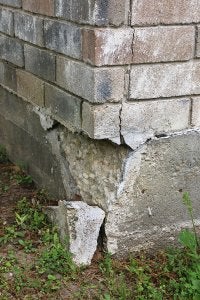
 The last thing any homeowner wants is to find puddles in the basement, which is why waterproofing near San Antonio is so important. Interior and exterior basement waterproofing can help you avoid the dangers of water damage, mold growth, and poor indoor air quality in your home. To determine what type of waterproofing is best for the situation, however, it is first necessary to identify the source of the problem. Continue on if you would like to learn about the steps of basement waterproofing.
The last thing any homeowner wants is to find puddles in the basement, which is why waterproofing near San Antonio is so important. Interior and exterior basement waterproofing can help you avoid the dangers of water damage, mold growth, and poor indoor air quality in your home. To determine what type of waterproofing is best for the situation, however, it is first necessary to identify the source of the problem. Continue on if you would like to learn about the steps of basement waterproofing.Drainage Problems
A fully prepared homeowner will have a proper drainage system in place in order to prevent water from pooling around the foundation of the home. Unfortunately, there are a few problems that may arise regarding these drainage systems if they are not maintained. Clogged gutters can lead water to overflow into the backfill, or the gutter may not extend past the backfill in the first place. If water is allowed to run or pool alongside your house rather than draining away from your foundation, it may seep into your home. It is particularly important to keep up on your drainage maintenance during the fall and winter months when leaves and snow are more likely to interfere with your drainage processes.
Groundwater
In addition to drainage problems, you may experience water in your basement due to backfill saturation. This occurs because the soil that lies between your foundation and the natural earth is looser and more prone to absorbing water. As more and more water makes its way into this loose soil, more pressure is put on your foundation, and eventually, water seeps through the concrete. Your waterproofing company can address this problem by installing a drainage system inside your basement. In this case, water will enter the basement, but it will be removed before it can cause damage.
-
Foundation Waterproofing Tips for Residence in San Antonio, TX
Moisture that seeps in through your foundation can cause all kinds of problems, so it is best to eliminate them with waterproofing near San Antonio. Using both interior and exterior basement waterproofing techniques, you can make sure you keep your foundation dry. Watch this video clip for tips for waterproofing a foundation.
A wet basement can lead to serious problems like water damage and mold growth, which can impair the structural integrity of your home and cause health problems. Fortunately, you can use waterproofing to keep moisture out of the basement and avoid these issues. In some cases, the best idea may be to modify the drainage. You can keep the water away from the foundation of your home by redirecting it using a downspout and an extension. You can also use interior basement waterproofing products that you can apply directly to the inside of the foundation in order to seal moisture out.
-
A Look at How Foundation Repair Works
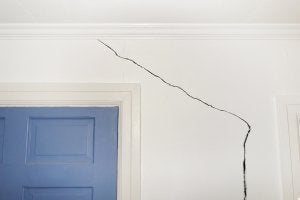 Replacing the foundation of your home can cost a fortune, so before you make the decision to do it, you should look into your foundation repair options. You can obtain foundation repair serving San Antonio for just a fraction of the cost of a total foundation replacement, and it will make your foundation strong and level again. How exactly does it work? Here are the steps that are taken when a foundation company uses piers to raise and support your existing foundation.
Replacing the foundation of your home can cost a fortune, so before you make the decision to do it, you should look into your foundation repair options. You can obtain foundation repair serving San Antonio for just a fraction of the cost of a total foundation replacement, and it will make your foundation strong and level again. How exactly does it work? Here are the steps that are taken when a foundation company uses piers to raise and support your existing foundation.Excavation of Soil
Before anything is done, a contractor will assess the property, mark off any gas lines surrounding the home, and
 then indicate where the piers will be placed to fix the foundation. The soil in those areas will then be excavated in order to give the contractor access to the foundation. Once the soil is removed, the contractor will also chip the foundation and make it smooth so that support brackets can be installed.
then indicate where the piers will be placed to fix the foundation. The soil in those areas will then be excavated in order to give the contractor access to the foundation. Once the soil is removed, the contractor will also chip the foundation and make it smooth so that support brackets can be installed.Installation of Brackets and Hydraulics
When the excavation is finished, it’s time for the contractor to drill the piers down to the desired depth and install the support brackets that go on them as well as the hydraulics. Each of these must be installed properly before moving on to the next step to ensure that the home is raised the right way.
Raising of the Home
Once the piers, support brackets, and hydraulics are in place, the hydraulics can be used sequentially in order to raise the home to the desired height. The contractor will make sure that the home is level throughout the process. Fastening plates and support brackets will then be permanently attached to the piers, and the contractor will record the depth of each pier as well as the pressure and elevation readings for each of them.
Finishing Touches
After the foundation repair is complete, it’s time to replace the soil that was excavated and take care of any landscaping that needs to be done to make the exterior of the raised home look great again.
-
What Concrete Flatwork Is and How It Can Increase the Value of Your Home
 Concrete flatwork, which refers to any concrete work along a horizontal plane, has numerous benefits can help to boost the overall value of your property. To learn all the basics you need to know about concrete flatwork , read on.
Concrete flatwork, which refers to any concrete work along a horizontal plane, has numerous benefits can help to boost the overall value of your property. To learn all the basics you need to know about concrete flatwork , read on.
What Is Concrete Flatwork?
Concrete flatwork refers to any concrete work along a horizontal plane on your property. Floors, patios, sidewalks, and concrete stairs are all included under the umbrella of concrete flatwork. Substantially less pricey than stone or brick mason work, concrete flatwork is a favorite for installation among property owners.
With increasing design options available, concrete flatwork is a wonderful option for garages, basements, walkways, driveways, steps, and patios. Well-done flatwork with the right finish and design can better the value of your home.
The Benefits of Concrete Flat Work
Concrete flatwork is incredibly durable and can last up to 30 years without the need for repair work or new pouring of concrete mix. Brick, stone, and woodwork just don’t wear as well, and they require much more regular maintenance on the part of the property owner. With excellent durability, concrete is ideal for driveways or garages. Without the need to worry about weeds creeping through stone or rocks, concrete is also excellent for patios and sidewalks.
How Concrete Flatwork Will Improve Your Home
High-quality concrete flatwork installation increases the value of your home by bettering its curb appeal. Poor driveways, sidewalks, and steps are aspects people notice immediately when looking at your home. If you’re looking to sell your home or simply invest more to increase the property value of your home, poor driveways, steps, and sidewalks must be taken care of. With so many design and finishing options available today, concrete flatwork can be a very appealing solution for any homeowner, regardless of aesthetic preferences.
Quality Matters
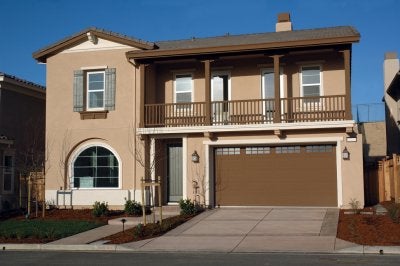 If you’re serious about creating a beautiful concrete flatwork surface, the quality and expertise of the contractor you’re working with matters. Great detail goes into the mixing of aggregates properly with quick delivery to cure best.
If you’re serious about creating a beautiful concrete flatwork surface, the quality and expertise of the contractor you’re working with matters. Great detail goes into the mixing of aggregates properly with quick delivery to cure best.Premium concrete flatwork can be finished in a variety of ways, so it’s important to work with a highly experienced company to take advantage of all the options available to you. Brush-textured concrete is a beautiful option for work done on the exterior of your home or property. Concrete stains or dyes allow for endless customization options as well.
For Restoration, Repair, and Maintenance Needs, Look to MitchCo Foundation Repair
With over 30 years of experience in the field, MitchCo Foundation Repair has the expertise you need to ensure that your concrete flatwork is restored and maintained optimally. Investing in your concrete flatwork enhances the beauty and improves the value of your home. Contact us today to learn about the high-quality services available to you that will best meet your needs.
-
6 Signs Your House Needs Leveling
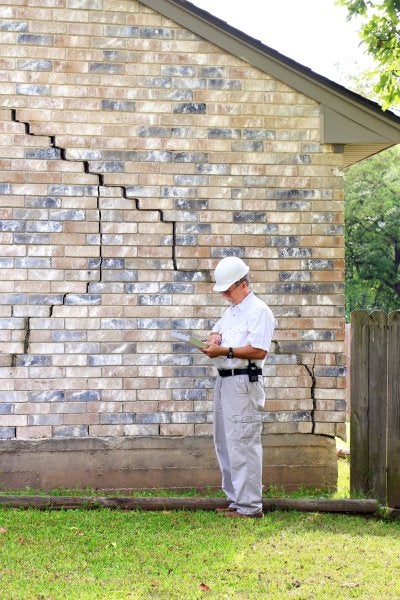
 Over time, all home foundations settle. The common causes of foundation settling are improperly backfilled soil, expansive soil, and tree roots. Movement in the foundation can affect the entire house and must be addressed right away. The structural issues will only become worse over time and can decrease your home’s value. Fortunately, there are some signs that indicate your house needs leveling.
Over time, all home foundations settle. The common causes of foundation settling are improperly backfilled soil, expansive soil, and tree roots. Movement in the foundation can affect the entire house and must be addressed right away. The structural issues will only become worse over time and can decrease your home’s value. Fortunately, there are some signs that indicate your house needs leveling.6 Signs Your House Needs Leveling Due to Foundation Issues
1. Unlevel Mortar Joints
Expansion joints, or the vertical gaps between bricks or concrete blocks, are usually experts’ go-to way of spotting foundation settlement. If the mortar that fills these joints is showing gaps, cracks or expansion, that’s a sign of foundation settling that may require foundation leveling.
2. Cracks Along the Exterior and Interior of Your Home
Another major sign of foundation settling is visible cracking along the interior or exterior of your home. If your home has any brick work, check for cracks in the mortar between the bricks, along with vertical cracks that seem to be growing wider. Additionally, if you have any brick work or not, look for cracks on the inside of your home, paying special attention to drywall, plaster, fireplace veneer and wood paneling. Don’t forget to check ceilings and floors too. Bulging floor tiles and exposed concrete floors are also signs of issues that may quickly become cracks, especially for basement floors.
3. A History of Previous Repairs
If you bought your home from a previous owner, check the history of past repair work. If there is evidence of patching cracks, replacing latches, or moving framework, this likely means that settlement could be occurring.
4. Stuck Windows & Sticking/Swinging Doors
Has your home ever given you trouble when it comes to closing doors or windows? If your house has foundation issues on one side of the structure, your house may now be at a slight angle causing your doors and windows to become stuck. This suggests that your house is no longer level.
5. Uneven Floors
Check for slants in your floors using a tape measure or level in numerous areas of your home including your interior walls and exterior walls. Slanted floors could be caused by other issues in your home, but this is still worth checking.
6. An Unstable Chimney
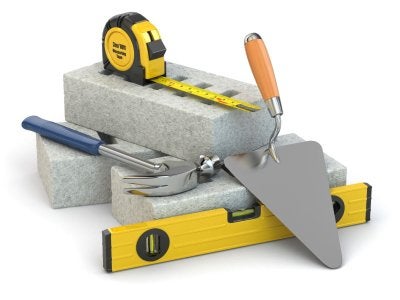
Leaning or cracking chimneys in many instances could suggest foundational issues if your chimney shares its foundation with your house. If you’ve had to repair your chimney because of these issues, it’s a good idea to check for settlement issues in your home’s foundation.
Contact a Highly-Experienced Professional Today
When it comes to foundation repair, this is a job best left to the experts. House leveling is very technical, and improper techniques used on your own could further worsen the foundation damage. At MitchCo Foundation Repair, we have been helping homeowners in the San Antonio area for over 20 years. We provide timely completion of projects and free, no-obligation estimates. Contact MitchCo Foundation Repair today to address your foundation repair needs.
-
Current Trends in Home Foundation
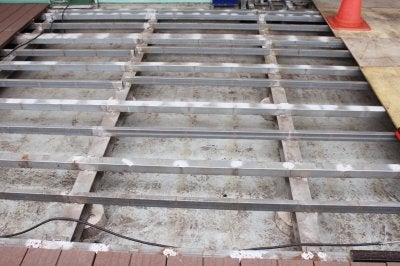 A proper home foundation does more than just hold a house above the ground. It helps to keep out the moisture, insulates against the cold, and resists the ever-shifting movements of the earth. A high-quality home foundation should last you a lifetime, so it’s well worth taking the time to ensure that you have the best type of foundation.While every home is built on a foundation, not every property is based on the same foundation. There are a variety of different foundations available, each best suiting a different area, home, and structure. Variations are possible, but here are the most commonly used in house foundation construction, and what repairs often need to be made.
A proper home foundation does more than just hold a house above the ground. It helps to keep out the moisture, insulates against the cold, and resists the ever-shifting movements of the earth. A high-quality home foundation should last you a lifetime, so it’s well worth taking the time to ensure that you have the best type of foundation.While every home is built on a foundation, not every property is based on the same foundation. There are a variety of different foundations available, each best suiting a different area, home, and structure. Variations are possible, but here are the most commonly used in house foundation construction, and what repairs often need to be made.
Pier and Beam
Pier and beam foundations are constructed with wood posts or concrete piers set deep into the ground to bear the weight of the building. First, this reinforced concrete footing is buried underground, anchoring the entire foundation of the building in the ground to prevent shifting in volatile soils. Next, piers are constructed and attached to the footing. Piers are typically made from concrete or brick. The piers come out of the ground and support beams, which are directly connected to the floor joists beneath your flooring.
This foundation is typically elevated 18 inches above the ground, with utility units for plumbing and electricity installed in this crawlspace. Repairs can easily be made since workers can access the area quickly. However, not just anyone can go into the crawlspace and make repairs. A professional who understands the foundation structure and common safety concerns can help you when repairing your pier and beam foundation.
Pier and beam foundations mean that there is easy accessibility for workers to get underneath the house and repair problems, such as electrical and plumbing issues. This makes some types of foundation repairs easier to correct. Furthermore, there is a less chance of damage from the ground as it sits a few inches above it. However, this type of foundation is often susceptible to drainage issues and must be addressed regularly. Luckily, professionals can help to correct drainage concerns.
Slab-on-Grade
The slab-on-grade foundation is what it sounds like: a concrete slab poured at ground level that serves as the subfloor for the home’s living area. These foundations tend to be useful in climates that don’t experience ground freezing, and they are often less expensive than the deep foundations. Unlike a pier and beam foundation, the slab-on-grade foundation is not elevated.
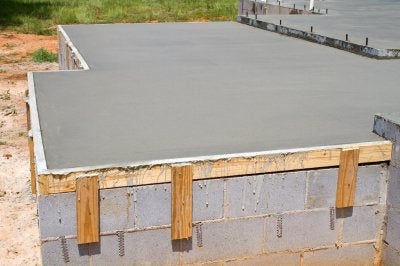
While it means that there is little chance for pests and critters to rest underneath your home, the downfall to slab-on-grade foundations is that the concrete must be broken up before the repair can take place if there is an issue. Additionally, as the pipes are stationed underneath the foundation, a burst water pipe can cost a considerably large sum of money to repair and recover. A foundation expert can customize repair to your home and needs.
Foundations can be repaired but not completely replaced without destroying the home above. Your home cannot survive without a strong foundation, which is why it pays to have a true professional on your side to help.
MitchCo Foundation Repair has over 30 years of experience in foundation repair, as well as restoration and maintenance. Serving the San Antonio area, our repair experts can help to correct your foundation issue. Contact us at (210) 485-1995 to find out how we can help keep your foundation in the best shape possible.
Source
-
The Effects of Water Drainage on Foundations
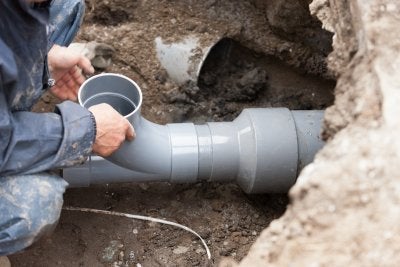 If water isn’t draining properly around your home, it can wreak havoc on your foundation. Poor water drainage, such as when water is flowing towards a house instead of away from it, can severely damage the foundation and compromise its structural integrity. A foundation repair expert is needed to fix such foundation issues, because doing it yourself could lead to future costly repairs.
If water isn’t draining properly around your home, it can wreak havoc on your foundation. Poor water drainage, such as when water is flowing towards a house instead of away from it, can severely damage the foundation and compromise its structural integrity. A foundation repair expert is needed to fix such foundation issues, because doing it yourself could lead to future costly repairs.Here’s how improper water drainage can impact your foundation.
Soil expansion
The seasonal swelling and shrinking of expansive soils, such as the clay soil found in parts of the San Antonio area, is the most common cause of foundation movement. During wetter months, the soil swells with an increase in its moisture content, which raises a foundation. Then in the drier months, the soil shrinks back down, and the foundation settles.
If water around a home isn’t draining properly, some areas of soil may swell more than others, and consequently, some areas may dry out quicker than others. This is bad news for a foundation. Cracking can begin to occur due to the unbalanced soil below, since one part of the foundation becomes more supported than another.
Soil erosion
As time goes on, soil around a home may become eroded. Runoff from rooftops that lands too close to a home may begin to erode the soil around its foundation. This could cause damage and movement of the foundation as the soil becomes less stable.
Clogged gutters can also contribute to soil erosion if water overflows and accumulates around a home’s foundation. Downspout drains that aren’t angled properly can add to the problem here too.

Groundwater
It’s not always direct rainwater that can cause a foundation issue. Groundwater can seep through soil and into areas that are damaging to a home’s foundation if pooling happens too closely to the house’s perimeter. Appropriate water drainage can prevent this.
Telltale signs
Your home’s foundation may be affected by water not draining properly if you notice continuous dampness in the house. Damage to walls, such as plaster crumbling, paint peeling or wood rotting, may also appear if the problem is left untreated.
Cracking and tilting in a home are also symptoms of poor water drainage around the foundation. When floors sag and windows or doors that once worked smoothly begin to become stuck, this can mean there’s movement in the foundation.
In situations where water continues to damage a home’s foundation, the home itself can start to sink, or worse yet, collapse. Therefore it’s important that water drains properly around a home, and why the help of an expert is necessary if it doesn’t.
Getting help
Serving the San Antonio area, our foundation repair professionals can help correct a variety of foundation issues, as well as make sure water is draining properly around your foundation. We offer free estimates too, so give us a call at (210) 485-1995 if you suspect any problems with your foundation or water drainage.
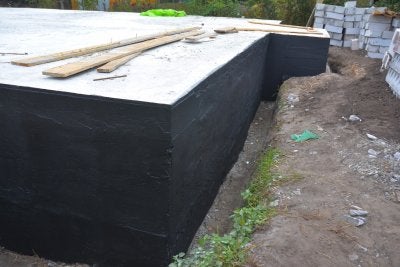
-
How Weather Affects Your Foundation
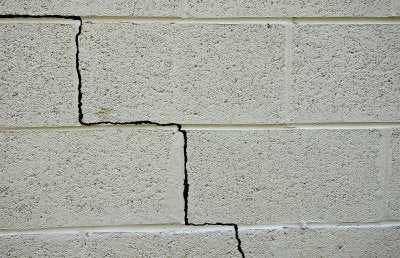 One area of the home most homeowners tend to ignore when it comes to maintenance and repairs of the home is the foundation. Whether you have a basement or concrete slab, the foundation is an essential support structure for your home. From hot and cold temperatures to different weather conditions, these can pose problems for your foundation, which can lead to costly repairs.
One area of the home most homeowners tend to ignore when it comes to maintenance and repairs of the home is the foundation. Whether you have a basement or concrete slab, the foundation is an essential support structure for your home. From hot and cold temperatures to different weather conditions, these can pose problems for your foundation, which can lead to costly repairs.Hot Weather
During the hot summer months and periods of drought, the dry air causes the water in the concrete to evaporate. This can lead to cracking and a weakening of the foundation. Hot weather also causes the soil to dry out, which can lead to foundation settling because there is less moisture in the soil. As a result, the foundation will “settle” or sink into the ground, resulting in an uneven foundation and cracks.
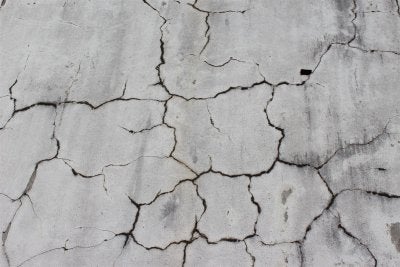
Rainy Weather
Any problems created during hot, dry periods of weather can cause problems once rain returns. Cracks or gaps in the foundation can allow the water to get under the home or into your basement, which causes flooding and further weakens the foundation. The water will also cause the cracks and gaps in the foundation to become bigger.
Not to mention, the underlying soil is often so dried out, it cannot reasonably absorb large amounts of water after prolonged dry spells, so it will become soft and mushy and could result in further “settling” or sinking of the foundation.
Cold Weather
While not that common, it can turn cold in San Antonio during the winter months, and we do occasionally get some snow. The colder temperatures can cause problems for your foundation in situations where there are already small cracks and gaps. As temperatures drop, concrete will contract slightly, until temperatures warm back up, when it will expand again. As such, any existing cracks and gaps can become larger.

How to Check Your Home for Foundation Damage
It is a good idea to get into the habit of performing a foundation inspection after especially long periods of hot, dry weather. Your home will exhibit certain characteristics that could indicate potential foundation damage, including:
1. Cracks and gaps in the foundation or basement floor and side walls.
2. The appearance of cracks on walls, ceilings, and stairways, and other upper levels of the home.
3. Doors and windows become difficult to open or close and seem overly tight.
4. You notice gaps and cracks around windows and exterior doors.
5. The roof looks like it is sagging, which is common in homes with severe foundation damage.
6. Large cracks and gaps in the soil around the exterior perimeter of the home.If you notice any of the above symptoms, it is highly recommended you contact a professional foundation repair company, like us, here at MitchCo Foundation Repair, to get a second opinion. Discovering foundation damage sooner, rather than later, is less costly to repair and fix. For further questions about foundation damage or to arrange an in-home inspection, please call us at 210.485.1995 today!
-
Tips for Protecting Your Foundation from Water Damage This Spring
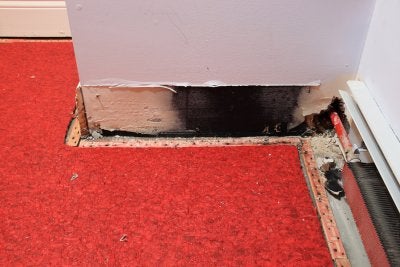
When the spring months arrive in the state of Texas, you may find that your area receives heavy rainfall and other extreme weather conditions. By waterproofing your basement and scheduling foundation repair for your home, you can make sure that the lower levels of your home are protected from water damage during the spring season. A company that offers French drain installation in San Antonio will help you make sure that your property is ready to withstand heavy rain during the next few months. To highlight the importance of working with a reputable contractor, here is a look at some tips for protecting your foundation from water damage this spring.

Clean Your Gutters
You may be surprised to learn that one of the best ways to protect your foundation from water damage this spring is to make sure that your gutters are clean. During the winter months, falling leaves and tree branches can easily clog up your gutters or the downspout extension from your gutter. If you neglect to clean out your gutters properly, rainwater can flood the sides of your foundation.
Schedule Drainage Correction
Improper drainage can cause major water damage to your home’s foundation. If your property does not slope gently away from the sides of your foundation walls, you could be at risk of experiencing major flooding. With drainage correction services, your contractor will carefully adjust the slope of your property and make sure that rainwater is able to naturally flow away from your foundation. After your drainage correction services are completed, you can rest assured that your foundation is protected from damage.
-
Why You Should Repair Your Foundation for Summer
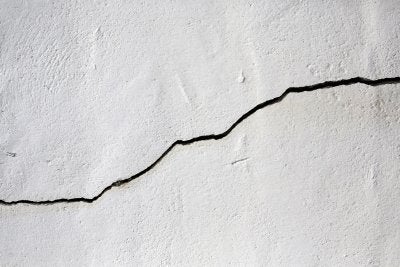 San Antonio’s clay soil, persistent dryness, and high summer heat present a perfect storm for foundation damage. In order to do its job of supporting your home, the foundation must first be supported by the soil underneath it.
San Antonio’s clay soil, persistent dryness, and high summer heat present a perfect storm for foundation damage. In order to do its job of supporting your home, the foundation must first be supported by the soil underneath it.
When summer temperatures hit in Texas, moisture located between soil particles can evaporate, causing those particles to fall together and “shrink” under your foundation. This kind of shrinking action can cause the foundation to rotate, drop, or both.
Issues can also be caused during times of intense storms accompanied by soaking rains. These conditions can cause shifting due to an excess of moisture between soil particles, which causes soil to become slippery and the foundation to shift.
Symptoms of a Foundation Shift
Albeit subtle, there are several symptoms which indicate a shifting or sinking foundation that’s in need of repair. These include:
- Cracks in interior drywall
- Buckling tile in the kitchen or bathroom
- Gaps around windows
- Doors that stick
None of these symptoms should ever be ignored, as they can lead to major damage and expensive repair to your home’s roof and plumbing. This is why it’s so important to have your foundation repaired as soon as possible.
Taking the First Step for Foundation Repair
If you are seeing the above symptoms of a shifting foundation, your first step is to contact a company experienced in foundation repair. They should send out a contractor who will conduct a thorough evaluation of your property, including the land situated around your home. This will allow him or her to evaluate both the cause and extent of the damage.
Common Repair Suggestions
It may be that your foundation will require leveling, which involves lifting your home and then stabilizing the foundation with piers. In other cases, soil can be a main culprit of foundation problems. Where this is the case, the drainage around your home may require adjustment and the soil stabilized to prevent future issues.
Prevention Options
Once you’ve called a reputable foundation repair company to fix your foundation, you can apply prevention measures to ensure that your foundation doesn’t shift in the future. If the cause of foundation shifting was excessive dryness, hydration of the soil around your home will be needed.
You can gauge the dryness of the soil by digging down six inches at your foundation. If the soil is very dry, your foundation will require hydration. However, you should dig down at your foundation and test the soil in this way at each side of your home because the conditions can and do vary.
If moisture is needed, you’ll need to run a soaker house approximately one foot away from the foundation, allowing the water to run until the soil is only moist.
Call the Professionals
MitchCo Foundation Repair has over 30 years of experience in foundation repair, as well as foundation restoration and maintenance services to customers in the San Antonio area. Call our office at (210) 485-1995 and discover how we can help keep your foundation in the best shape possible.
RECENT POSTS
categories
- Uncategorized
- Foundation Repair San Antonio
- Cracked Foundation
- Foundation Information
- Foundation Repair
- Contractors
- Drainage Maintenance
- drainage correction professionals
- Foundation Cracks
- waterproofing services
- home foundations
- Drainage Correction services
- Sagging Lintels
- Lintel Repair
- Drooping Lintels
- [INFOGRAPHIC]
- Drain Installation
- Foundation Damage
- Poor Water Drainage
- Concrete flatwork installation
